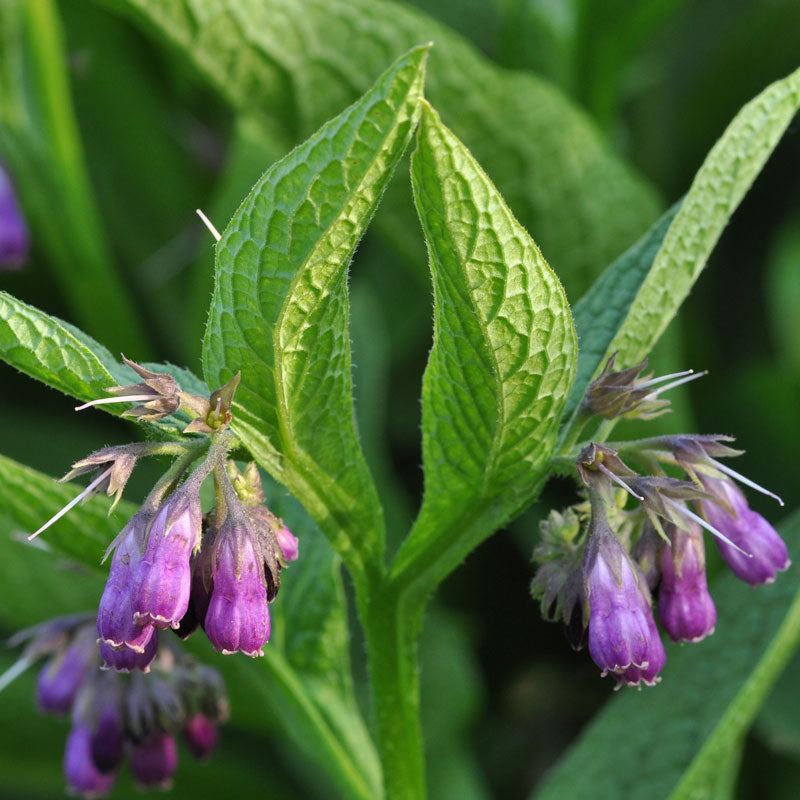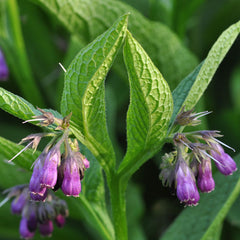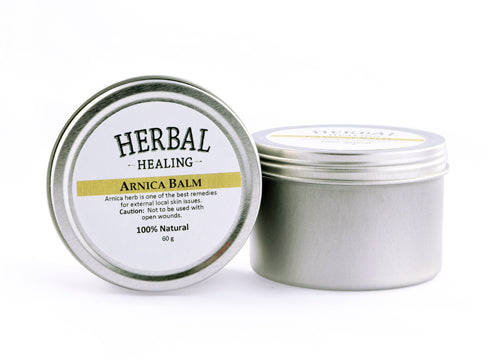

Comfrey (Symphytum officinale)
- $14.00 CAD
- $14.00 CAD
- Unit price
- per
50g, 100g, 250g
Couldn't load pickup availability
Parts used: Leaves and root
Properties
Alterative, anti-catarrhal, antitussive, astringent, bitter, demulcent, emollient, expectorant, febrifuge, nutritive, vulnerary
Primary nutrients
Eighteen amino acids (especially lysine), calcium, copper, iron, magnesium, phosphorus, potassium, protein, vitamins A and C, zinc
Comfrey is one of the most valuable herbs known to man. It has been used with success for centuries as a wound healer and bone knitter. It feeds the pituitary with its natural hormone and helps to strengthen the skeletal system. It contributes to the calcium/phosphorus balance by promoting strong bones and healthy skin.
Comfrey helps promote the secretion of pepsin and is a general aid in digestion. It generally has a beneficial effect on all parts of the body. It is one of the finest healers of respiratory ailments and can be used both internally and externally for wounds, sores and ulcers. It has been used with great success for hemorrhage, whether from the stomach, lungs, bowels, kidneys or piles.
Comfrey is recommended for just about any part of the body that might be injured to promote rapid healing. It contains allantoin, which helps in stimulating new cell growth and increases cell production. It also helps reduce inflammation, which may aid in healing. In addition, comfrey is a good source of the amino acid lysine, usually lacking in diets that contain no animal protein.
Consult a health-care practitioner before taking comfrey internally due to the possibility of liver damage.
Primary Applications
Anemia
Arthritis
Blood impurities
Bones, broken
Boils
Bruises
Burns
Emphysema
Fractures
Lung disorders
Sprains
Swelling
Secondary Applications
Allergies/hay fever
Asthma
Bites, insect
Bleeding
Bronchitis
Bursitis
Cancer
Colds
Colitis
Coughs
Cramps, intestinal/leg
Diarrhea
Eczema
Fatigue
Gangrene
Gastric disorders
Gout
Infection
Kidney stones
Pain
Pleurisy
Pneumonia
Respiratory problems
Sinusitis
50g, 100g, 250g
RELATED PRODUCTS
- Choosing a selection results in a full page refresh.



